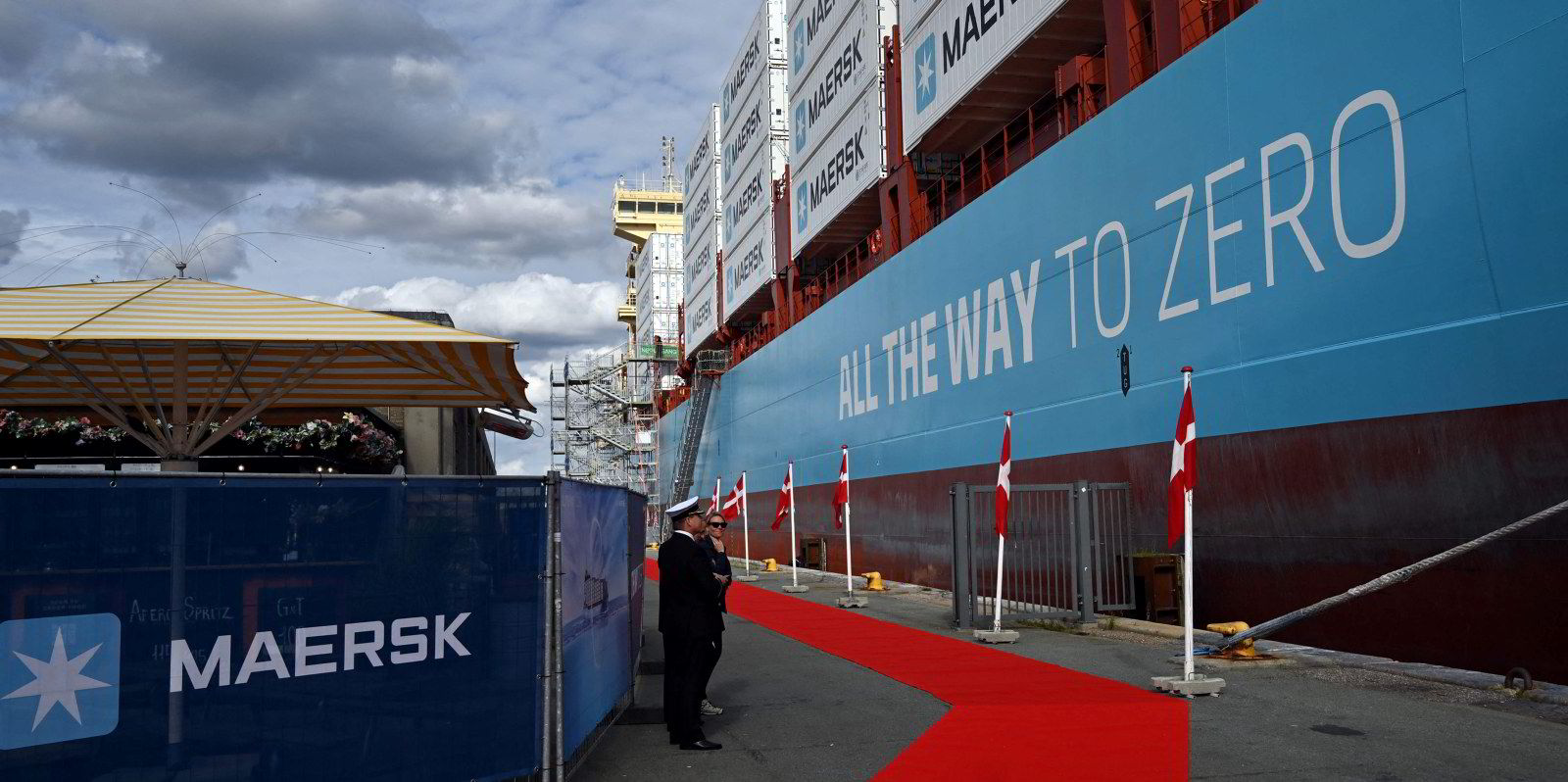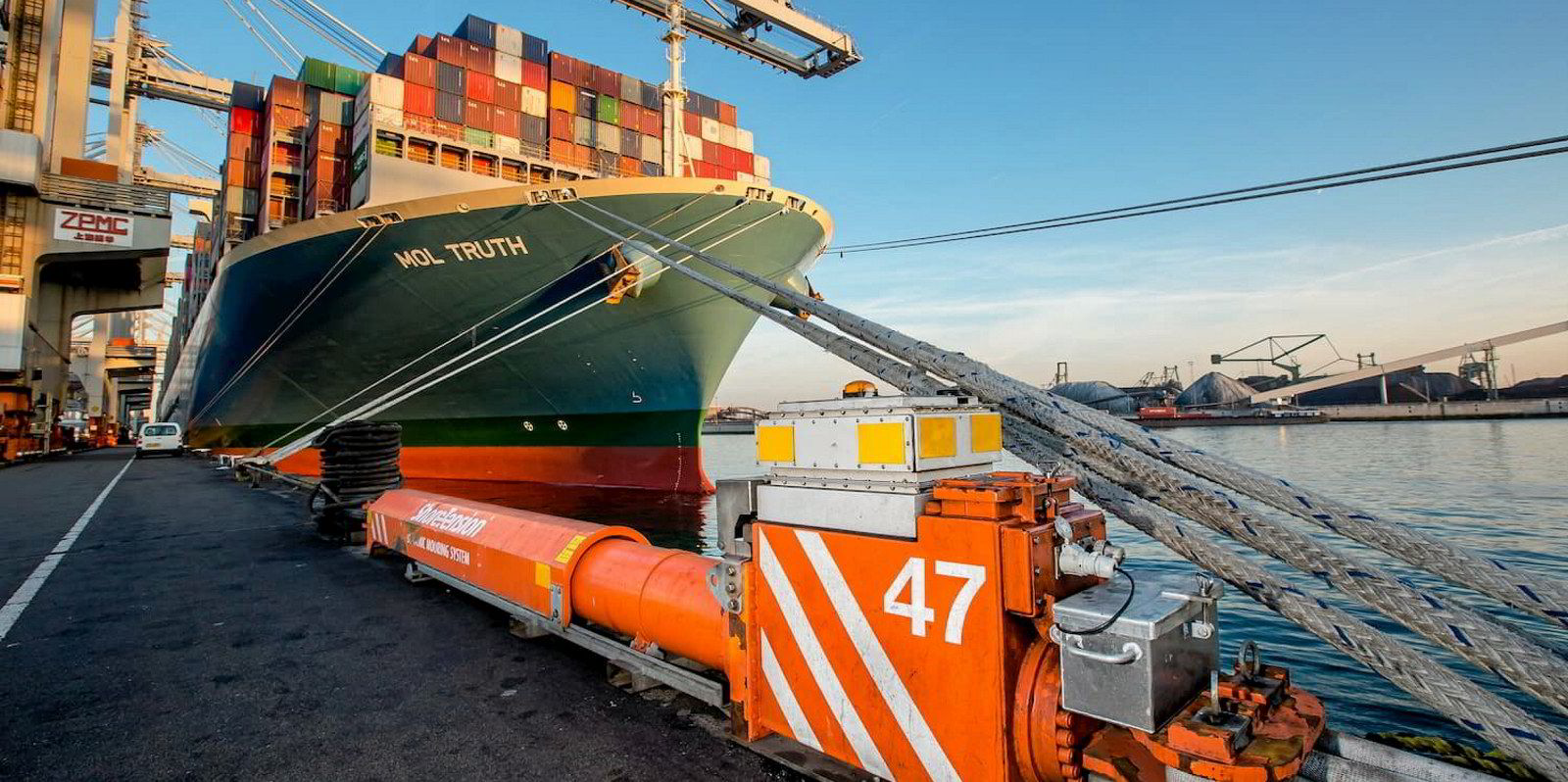How do you define a green leader in shipping? There are many answers to that question.
As sustainability becomes increasingly important in the business world, it remains difficult to make meaningful comparisons of the actions companies are taking on environmental factors in a global industry with varying segments and ESG’s focus on transparency rather than action.
But that is beginning to change. The means by which the environmental performance of shipping companies can be weighed are poised to increase, with growing sustainability reporting requirements and private-sector initiatives that more and more will provide ways to interpret the disclosures.

This Green Power edition of TW+ includes 10 leaders — individuals or teams who are influencing shipping’s sustainability transition by the actions they are taking within their own organisations.
Some, though not all, are featured near the top of lists of rankings that rate companies based on environmental, social and governance (ESG) factors, although these rankings often focus on the detail of their disclosure, rather than how green their environmental practices are.
ESG100 checking targets
Among key rankings in the shipping sector is Position Green’s ESG100, which analyses companies listed in Scandinavia based on their sustainability disclosures.
Our Green Power list features three of the seven marine industry companies that received a B+ or better -n the report: container shipping giant AP Moller-Maersk, car carrier operator Wallenius Wilhelmsen and maritime conglomerate Wilh Wilhelmsen Holding, the only one to receive an A+.
Position Green ranks companies by the ESG reporting across Norway, Denmark and Sweden. These are all the maritime companies that received an B+ or higher in the report.
| Company | Listing country | Grade |
| Wilh Wilhelmsen Holding | Norway | A+ |
| Hoegh Autoliners | Norway | A |
| AP Moller-Maersk | Denmark | A |
| DFDS | Denmark | B+ |
| Torm | Denmark | B+ |
| BW Offshore | Norway | B+ |
| Wallenius Wilhelmsen | Norway | B+ |
Like other rankings, the ESG100 is heavily focused on the degree of detail in sustainability disclosure, but the 2023 edition goes into a level of granularity that is focused on whether companies are ready for the European Union’s upcoming sustainability reporting requirements.
But the report does provide insight into environmental action by weighing companies’ decarbonisation pathways.
Position Green executive chairman Joachim Nahem says the ESG100 is not all his company does; its sustainability software business also offers tools for companies to measure their performance against benchmarks.
The key message of the ESG100 is that companies must collect and manage sustainability data as they would financial information.
“Just paying lip service to sustainability will not cut it,” he tells TW+. “A and B-listed companies on our ESG100 demonstrate that they are taking ESG data management seriously.”
If companies do not take ESG data seriously, they’ll struggle to comply with requirements from customers and regulators, as well as the growing number of auditors and third parties that verify sustainability claims.
And those shipping companies will find it hard to make meaningful change.

“Improved performance means disclosing data that can be recognised by stakeholders, all of whom are getting more sophisticated on ESG,” Nahem says.
What distinguishes a company that receives an A or B grade on the ESG100 ranking, when it comes to environmental factors?
Position Green says they are more likely to be more mature on their greenhouse gas disclosures, including reporting indirect Scope 3 emissions, rather than just reporting direct Scope 1 emissions or Scope 2 pollution that relates to the carbon footprint of energy purchases.
They will also have a breakdown of their energy mix, report biodiversity risks and include a scenario analysis of their climate change risks, among other factors.
“What is not a good sign is if you’re just saying, ‘We’re committed to the UN Sustainable Development Goals’,” Nahem says. “That doesn’t mean anything . .. You may have been able to pull that off five years ago.”
But while the ESG focus is on transparency — Nahem points to controversy over the exclusion of electric car maker Tesla from ESG stock indices that include oil companies — there is a growing focus on companies’ sustainability journey.
On decarbonisation, the ESG100 looks at companies’ targets and whether they have committed to Paris Agreement-aligned goals.

Position Green says A and B-rated companies are likely to have a solid understanding of their climate targets and have identified steps to achieve their ambition, and they have publicly committed to the Paris Agreement.
“What we would look [at] for it to be credible is that you commit to a framework,” Nahem says of companies’ net zero targets.
The key framework is the Science Based Targets initiative, a non-profit effort that laid out shipping-specific guidelines late last year.
“Generally, if you’re SBTi-approved, that’s a gold standard,” he says.
The Science Based Targets initiative gives companies a way to have their climate targets validated against a Paris Agreement-aligned pathway.
| Target | Near-term | Long-term | Net-Zero |
| AP Moller-Maersk | Committed | Committed | |
| Bibby Marine | Committed | Committed | |
| Cosco Shipping Logistics | Validated 1.5C target | Validated 1.5C target | Validated 2050 goal |
| Crowley | Committed | Committed | |
| Evergreen Marine | Committed | Committed | |
| Hoegh Autoliners | Validated target for well below 2C | ||
| K Line | Validated 2C target | ||
| NYK Line | Validated 2C target | ||
| Nordic Ferry Infrastructure | Committed | Committed | |
| Samskip | Committed | Committed | |
| Stolt Tankers | Committed | Committed |
But since SBTi laid out its ambitious guidelines for shipping, which essentially call for near-zero emissions by 2040, its list of committed maritime companies has not grown significantly, and some have even had their commitments removed.
Japan’s K Line — which is featured in this Green Power edition — and NYK Group were early adopters and have validated targets on SBTi’s previous pathway aimed at capping global warming at 2C.
Only Cosco Shipping Logistics Chongqing has validated targets on the new 1.5C pathway, but other arms of the giant China Cosco Shipping are not listed.
Hoegh Autoliners has a validated near-term target on a pathway aligned with stopping climate change at “well below 2C”.
SBTi lists seven other companies, including Maersk, as “committed”.
Staff at SBTi did not immediately respond to questions from TW+ about the lack of new commitments and removals of some companies.
But Nahem says the organisation is overwhelmed and is working through a backlog of applications.
“They’re completely overstretched,” he says, noting that it has caused frustration in the corporate world. “We have clients who don’t get a response, or it takes six months to get a response, and then it takes another six months for them to process and then another six months to validate that.”

However, he still encourages companies to target SBTi validation, even if it takes some time, because it provides a framework for setting net zero commitments.
The SBTi is a partnership of CDP, the United Nations Global Compact, the World Resources Institute and the World Wide Fund for Nature.
Formerly known as the Carbon Disclosure Project, CDP has its own way of weighing the greenhouse gas footprint of shipping companies, with its focus also on transparency of disclosures. Its 2022 report card gave A grades to only two companies: K Line and NYK Group.
A governance-weighted scorecard
Another leading ESG shipping scorecard is produced by New York’s Webber Research & Advisory, led by respected financial analyst Michael Webber.
But only one of the companies profiled in this Green Power edition — Maersk — appears in the top quartile of his ranking. And Diana Shipping, which is also profiled here, is in the bottom half of the 64 companies.
Webber Research & Advisory rated 64 companies in 2023 in in rankings in which governance plays the biggest role.
| Company | 2023 ranking | 2022 ranking |
| Genco Shipping & Trading | 1 | 1 |
| Triton International | 2 | 8 |
| Matson | 3 | 3 |
| Ardmore Shipping | 4 | 4 |
| Pacific Basin Shipping | 5 | No rating |
| DHT Holdings | 6 | 6 |
| Navigator Holdings | 7 | 11 |
| Grindrod Shipping | 8 | 9 |
| AP Moller-Maersk | 9 | No rating |
| Kirby | 10 | 12 |
| World Kinect Corp | 11 | 7 |
| Torm | 12 | 13 |
| International Seaways | 13 | 10 |
| Eagle Bulk Shipping | 14 | 2 |
| Belships | 15 | No rating |
| Euronav | 16 | 5 |
That is because the rankings are heavily weighted towards governance — the G in ESG.
Webber, who is featured in our list of advocates for his role in keeping ESG at the top of minds on Wall Street, does not think emissions reporting has advanced to the point at which a clear, objective determination can be made about how “green” a company’s performance is.
“It’s an inherently subjective question, and definitions of green can vary,” he says.
“We think it’s so difficult to objectively measure how green a company is, or where the goalposts should actually be. If you were to ask 10 different people how green a company is, you’d probably get 10 different answers. And comparing companies in different industries is inherently difficult.”
So where environmental factors come into play in the scorecard, Webber keeps the focus on disclosure and transparency, leaving it to specialists on those topics to interpret the data. “I do think eventually you can get there. But you need significantly more data and a lot of thought.”
For Nahem, upcoming regulatory developments on sustainability reporting will make it easier to make meaningful comparisons on the environmental performance of shipping companies, partly because the EU’s Corporate Sustainability Reporting Directive will require “double materiality” reporting across a host of ESG factors, and it will apply to tens of thousands of companies.
“The double materiality concept is that you should be focusing on what’s actually material to your business and what your business is doing to people and the planet,” he says.
And Position Green believes the rules will be a “GDPR moment” — a reference to the General Data Protection Regulation — because it will have ramifications for companies well beyond EU borders.
Taking action
And while it remains difficult to make such comparisons, this TW+ Green Power edition includes companies that do not appear on any such rankings, because they are taking actions to help make shipping greener.
And that is not easy.

Law firm Watson Farley & Williams — which helped develop the Poseidon Principles in which banks benchmark their ship finance portfolios against decarbonisation goals — found in the second edition of its Sustainability Imperative survey that only 28% of maritime sector respondents believed that they will meet emissions milestones in five years.
That’s a decline from 40% in the first report in 2021.
“We think there’s an element of reality hitting home and the enormity of what needs to be done coming into play,” says partner Simon Petch. “There’s still a huge amount to be done.”
He says the industry is still in an information-gathering phase when it comes to decarbonisation, and the direction of travel is not clear.
Lizzie Roe, a Singapore-based partner at Watson Farley & Williams, says bigger companies are further along in the decarbonisation journey than the smaller shipping companies that make up much of the industry.
“What we are seeing when we speak to clients, is that some of the very large companies have dedicated teams that are specifically working on the energy transition challenges, whether that’s looking at it from the regulatory aspects, or research and development or potential alternative fuels,” she says.
“And they’re able to throw a lot more resources at this problem.”
Joe Brady contributed to this article from Stamford







